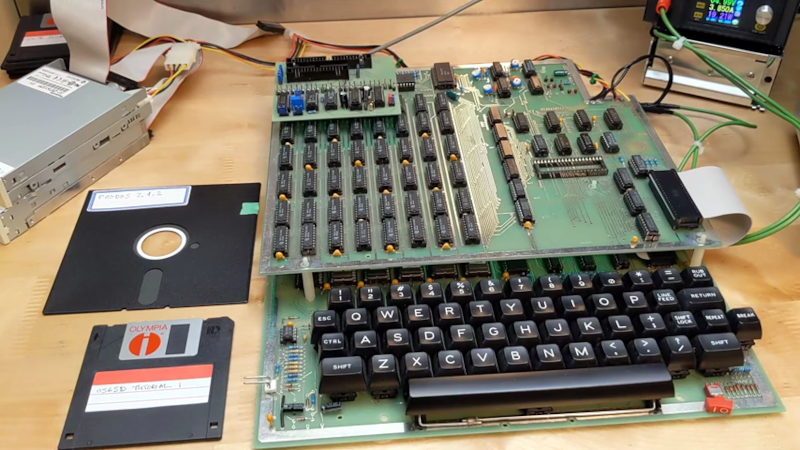While our modern computer can easily emulate a lot of different old machines, there is something about having replica hardware that is even better. Not as nice as having the real thing, in some ways, although you don’t have to worry about wear and tear on a replica, either. [Jeff Tranter] has built a kit replica of an Ohio Scientific Superboard II, and it looks great, as you can see in the video below.
This was an inexpensive all-in-one 6502 computer with a keyboard and provision for TV or monitor output. If you had a 5V power supply, a cassette deck, and a TV you were in business for less money than most of the comparable alternatives. In fact, [Jeff] has the canceled check where his parents paid $486 Canadian for one in 1981. That was his introduction to computing, and we’d say that was a reasonable investment on the part of his parents.
Like many of us, [Jeff] was sad when his old computer was destroyed while in storage. But undeterred, he set out to build a replica. Earlier, he’d built a reproduction kit that used modern components, but he wanted something a bit more faithful. He noticed that modern reproduction PCBs were available for the board and some matching I/O as well. The boards are very similar to the original, with a few concessions to modern times like footprints for modern keyboard switches and EEPROMs.
Not all of the parts are readily available, but with a little detective work, you can get what you need. He even found replica keycaps. The original machine had a locking shift lock key which wasn’t unusual in those days, but that’s hard to find now. Because of this, the redesigned PCB has space for an external caps lock switch. You might think you don’t care, but BASIC and other software of the day often expected uppercase input only.
If you’ve never built a board without solder mask, you’ll want to be careful as it is surprisingly easy to bridge connections inadvertently. [Jeff] found that out the hard way. It makes us want to recreate some of the computers of our youth, too.
While Ohio Scientific doesn’t have the name recognition of Apple, they had a lot of affordable products in the early day of personal computers. If we want to follow in [Jeff’s] footsteps, we’ll need an 1802 and some perfboard.
Thanks to [Stephen Walters] for the tip.
















Taught myself BASIC and 6502 assembly on one of those in the in the very early 80s… 24 x 24 (if I remember rightly) character monochrome display. Character set had cool (to 14 year old me) tanks and aeroplanes, though diagonal versions of those used two characters as they were too wide to fit in a single one.
Tell that to the kids of today…..
Did he copy the OSI Superboard, or the UK101?
I had a Challenger 2P in the late 70’s in high school. 1K of video ram so 32×32 characters. I used the monitor in ROM to enter machine instructions to create a very simple on-screen text editor. There were unpopulated traces on the circuit board where one could add components to drive a speaker. I sold my 2P to a friend so I could buy a used car to go to college.
I have the gigantic OSI with 18? slot backplane and separate dual 8″ floppy. It was bought for a physical chemistry instrument. The attractions were 6502 like the Apple II and AIM-65 being used for testing, price, and that cheap Molex pin based expansion. We loaded it up with 12 bit ADC and DAC and stepper drivers and an XY plotter and a Tek storage display. Plus a Mime 1 terminal. Oh, and a AMD9511 floating point processor. It was a great system.
A major attraction was Bill Ragsdale’s FIG Forth which has block file access for the floppy. Forth on small memory systems gave tremendous performance over BASIC and has a built in assembler for embedding code in Forth words. The same Forth was available on the AIM-65 and Apple II.
I don’t know if the board above needs dynamic RAM in order to create the video. If not, I don’t see why you would not use a single chip 64KByte static RAM. They are quite cheap.
Synchronicity! I just pulled my superboard II out of the basement yesterday. It was speedy in its day with a 2X overclock and a modified Kansas City Standard interface that boasted four times faster tape storage. I too mostly ran Fig Forth on it.
Still have my Superboard. Many parts of my C3 system.